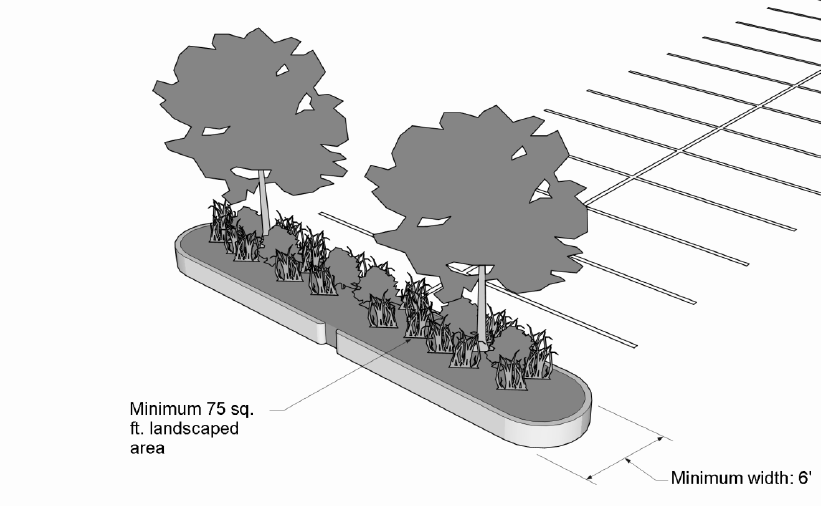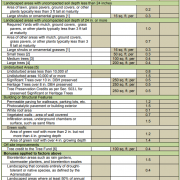Table of Contents

Landscaping regulations establish minimum standards for the amount and types of landscaping, the location of landscaping, buffer and screening standards (to address visual impacts from development activities or site features), fence requirements, and installation and maintenance. Many codes also include standards for tree preservation, water efficiency and conservation, and low-impact development.
In addition to providing a more aesthetic environment, landscaping regulations can help reduce risk to natural hazards, including flood, drought, geologic hazards, wildfire, and extreme heat. Requiring a certain amount of landscaping reduces the amount of impervious coverage on a site, allowing water to percolate into the site instead of being conveyed across the site. Designating appropriate plant species for a dry climate can improve the water-efficiency of a site, which is especially important during periods of prolonged drought. Installing plants and ground cover helps stabilize steep and unstable slopes. Establishing standards for the type and location of landscaping can also reduce wildfire risk to structures.
Landscaping regulations are typically adopted as part of the zoning and development regulations either as a standalone chapter or article, or as a component of the larger development standards article or chapter. Formal adoption by the local governing body is required to enact or modify the landscaping standards.
Landscaping regulations typically include the following fundamental elements, which are further described in the model landscaping ordinance.
Most communities regulate landscaping to some degree through their land use and development regulations; however, few have stated hazard mitigation as a major consideration behind such standards.
Benefits of implementing landscaping regulations include:
- Mitigating the amount of impervious coverage on a lot.
- Detaining and slowing the conveyance of water during flood conditions.
- Reducing the urban heat island effect.
- Protecting sensitive areas by ensuring adequate buffers are provided.
- Improving water efficiency by requiring native species and limiting the amount of turf grass.
- Providing defensible space from structures (wildfire mitigation).
- Stabilizing steep and unstable slopes.
- Reducing risk to existing development within hazardous areas.
Challenges include the following:
- Landscaping regulations are adopted by ordinance, usually requiring a code amendment that can take time and resources (especially for smaller communities).
- Depending on the complexity of the regulations, administering the landscaping ordinance may require staff trained in landscape architecture.
- Landscaping regulations have to be coordinated with other site development features, and balanced with other political priorities. For example, requiring substantial landscape screening to lessen the visual impacts of new development is sometimes at odds with defensible space standards.


